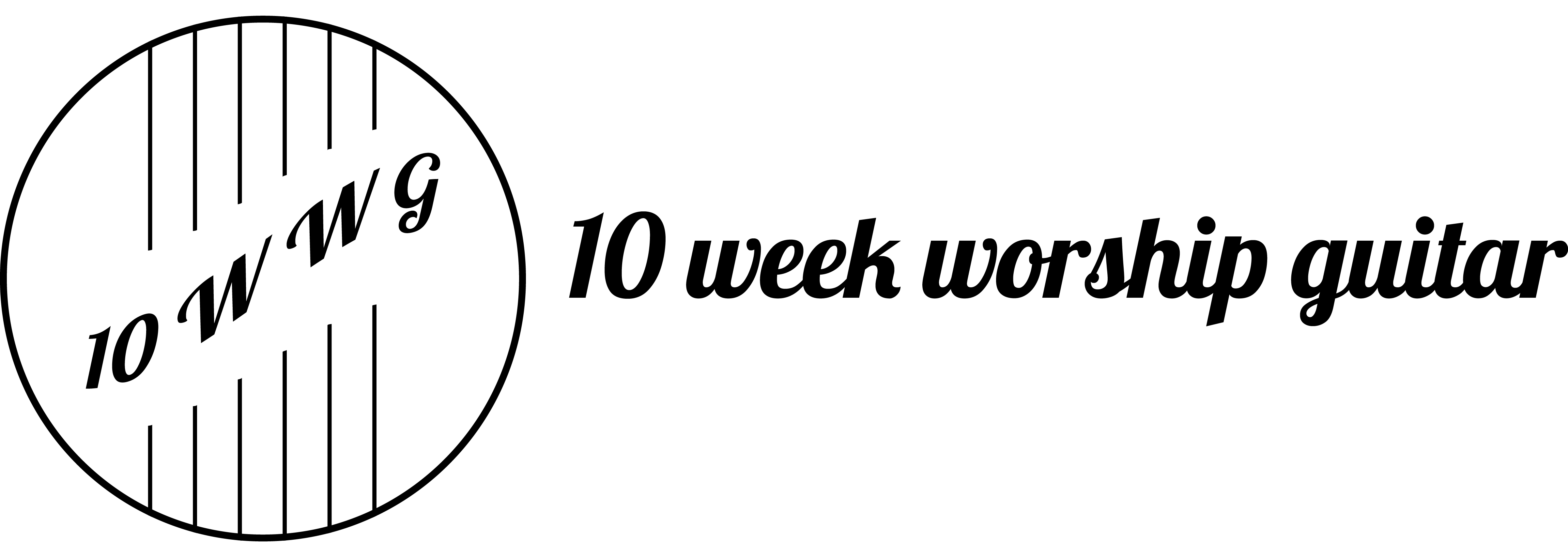Welcome to The Ten Week Worship Guitar blog. As well as my recent resurrection of my YouTube channel, on which I’ve now begun sharing a weekly worship guitar focused workshop called ‘Worship Workshop Wednesday’, I recently resumed blogging. I started with a 3-part series on why I teach worship guitar as opposed to just playing it.
Now, over the next few weeks and months, here on the blog, I’m sharing something which I’ve not extensively shared anywhere before. I’ll be sharing some work from my PH.D, which focuses on the development of the guitar over the last century, and it’s influence on the music produced on it. If you’re interested in learning more about the guitar, look no further than this blog. If you know others who would be interested in this too, please share with them.
A new post will be shared here on the blog every Monday, so do ensure that you’re following the journey, and don’t forget to subscribe to my YouTube channel, where you’ll receive a free workshop every week which will teach you not only a new worship song to add to your repertoire, but also a skill, which will continue to carry you forward in your worship guitar journey.
The guitar in the USA – Design and development: Part Two
The guitar would almost certainly have been introduced into the Southern States across the Mexican border. Mexican settlers were found in Texas, New Mexico and Southern California in the nineteenth century. As Evans points out “The modern twelve-string guitar was introduced into North America from Mexico” (1977: 224). The statement that: “… the proximity to Mexico and the presence of the Spanish-American population in Texas contributed to the popularity of the huge twelve string guitars.”(Oliver 1969: 27), is backed up by the fact that during the early part of his career, at the beginning of the century, the blues guitarist Lonnie Johnson favoured twelve-string acoustic guitars, which he often modified by removing the octave strings from the lower three courses. The twelve-string guitar was also popularised by recordings of several other prominent performers.
The Spanish guitar.
Black Cubans had adopted the guitar much earlier than the black musicians in North America, which was fairly inevitable as the guitar is fundamental to Spanish music, more so than in the music of other white European-Americans. The Spanish guitar had been taken to the Caribbean and Mexico as early as the sixteenth century (Chapman 2000: 216), therefore it is possible to speculate that the instrument was brought by slaves who arrived in the United States via the Caribbean islands. New Orleans, in particular, had a history of close contact with the West Indies, so much so that musicians have suggested that there are common elements between New Orleans jazz and certain styles of music of the West Indies. Kubik discusses “Influences upon the Deep South from Louisiana, whose musical cultures were much closer to those of the Caribbean in the nineteenth century and had a large share of Congo/Angola and Guinea Coast West African elements, can also be felt in some idiosyncrasies within the blues tradition of the twentieth century” (1999: 100).
The American Guitarist.
Throughout the nineteenth century in North America, the guitar was increasingly accepted by the lower middle classes and was used as an instrument for the performance of classical and parlour music. A tuition book, the Complete Instructor for the Spanish and English Guitar, Harp, Lute and Lyre was published in South Carolina in 1820, followed in the 1830s by The American Guitarist. (Grunfeld 1974: 241). At this time there was a repertoire of light classical pieces for the guitar, including fashionable compositions such as ‘Siege of Sebastopol’, ‘Wild Rose Medley’ and ‘Midnight Fire Alarm’. It has been suggested (Oliver, Harrison, Bolcom 1986: 165) that these compositions themselves had an influence on the development of guitar techniques. The open E tuning (E-B-e-g#-b-e’) that was commonly employed by guitarists is sometimes termed the “Vastopol” tuning, a name derived from the 1880 composition ‘Siege of Sebastopol’, which was performed in that tuning…
Join me here on the blog again next week as I’ll be continuing this series going through the development of the guitar. Next week I’ll be sharing a little more about the leading figures of developing the guitar.
By the way, if you’ve always wanted to play worship guitar but have never found the time, I’d love to introduce you to learning to play from scratch by going through my FREE 3-part miniseries which will give you not only the skills, but will also give you three new worship songs to add to your repertoire. Click HERE to access the free series and start (or continue!) your worship guitar journey today!
